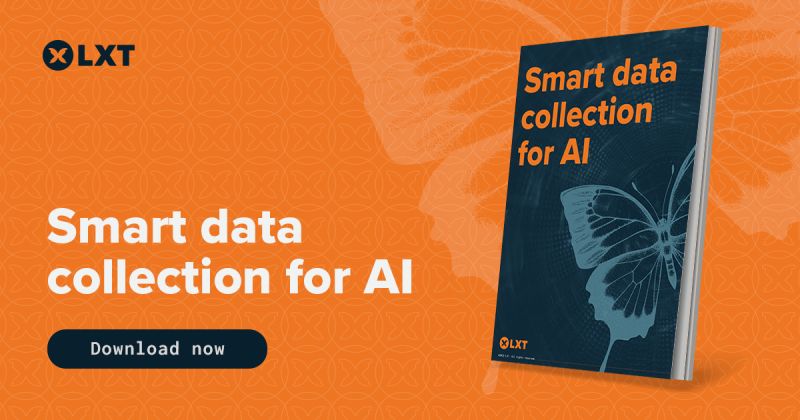It’s been a watershed year for artificial intelligence (AI). Generative AI solutions such as ChatGPT and Dall-E have fueled fresh thinking about the potential of AI. These important milestones have amplified discussions about Responsible AI and potential pitfalls of the technology, such as inaccurate decisions and undetected biases. In a column for the World Economic Forum, DataRobot CEO Michael Schmidt highlights two cases in which municipal and federal governments are already addressing these issues.
Launching an AI initiative within any organization is an extensive endeavor that requires a high degree of planning, from aligning on the goals, to adequately resourcing the project, to building a company AI data strategy, and more. Creating a Responsible AI solution adds yet another dimension to this effort, but it’s a critical factor to building an inclusive solution that better serves end users.
One strategy for designing Responsible AI solution is to ensure that data collection efforts are comprehensive and follow current regulatory practices such as GDPR. Working with an experienced data collection partner can ensure these goals are met, and can lead to a wealth of other benefits for your AI projects.

How a data collection partner supports your AI projects
Improving data quality
Ensuring that your AI solution makes sound, accurate decisions starts at the beginning of your AI journey, when you create a plan for sourcing your training data. The foundation for accurate decisions is quality data, which is generally marked by the following attributes:
- Relevancy – Pertains to the business problem at hand.
- Comprehensiveness – Encapsulates a business problem and includes external and internal data.
- Reliability – Is accurate and consistent in its values and how it is labeled.
An experienced data collection partner can consult you on the optimal data collection methodology including: identifying the data that needs to be collected, comparing it against what you already have on hand, and collecting whatever additional data is needed— whether through crowdsourcing, in studio settings, or in specific environments that are relevant to your use case.
For example, if you’re creating a behind-the-wheel voice assistant for drivers, it would be essential to record multiple variations of voice commands in a variety of scenarios and weather conditions (e.g. with the windows up and down, in heavy traffic and in light traffic, etc.). Capturing every conceivable scenario and condition, in the actual operating environment, will help ensure that there are no gaps in the voice assistant’s capabilities.
Once the data has been collected, your partner will oversee the correction, organization, and labeling of data to ensure the efficient training of your machine learning algorithm. In this process, they will eliminate any redundant data, track down missing values, and make sure that every data point is clearly labeled.
Managing data bias
Machine learning algorithms learn from the generalized information that is fed into them, and use that information to make more specific decisions. To work with you more effectively, a data collection partner might ask questions that are designed to gain:
- A better understanding of your domain
- A clear grasp of the goal of your AI solution, and the consequences of a false positive vs. false negative
- Awareness of where the existing training data came from
Information like this can help a data collection partner form healthy biases upon which to base decisions about how much training data they need to collect, how broadly they should collect, and where they should collect it from.
Recommendations based on healthy biases can also help to avoid some of the wrong biases that most frequently plague AI solutions. Those biases being:
- Sample bias – Stemming from incomplete or inaccurate datasets.
- Prejudice bias – Driven by the cultural stereotypes of someone involved in the data collection or data training processes.
- Confirmation bias – An innate or learned tendency to interpret information through the lens of one’s existing beliefs.
To ensure that your AI solution is free from bias based on erroneous or incomplete information, your dataset should incorporate data from a diversity of sources—not just first-party data from your corporate data farm, but data from outside providers, as well as custom datasets tailored to your particular need.
And to avoid the potential of biases gaming the data training system, your data collection partner should recruit a diverse pool of data contributors. This is an especially critical point given the global and multi-cultural nature of B2B and B2C commerce. Customers who feel fully acknowledged—not just another name or number—will tend to feel better about doing business with you. As such, capturing visual and speech data that’s relevant to their ethnic or linguistic background could go a long way toward fostering loyalty.
Accelerating entry into new markets
In addition, if a data collection partner has access to a broad range of target markets, it can help you to more easily expand your company’s presence across different geographies. Access to native speakers in these markets, for example, can help collect accurate data, enabling you to establish a strong market presence from the very outset. Furthermore, an experienced data collections partner can seamlessly recruit the resources needed to collect large volumes of data in a matter of weeks, accelerating your time to market.
Boosting AI accuracy
Over time, an AI solution’s decisions tend to become less accurate. This dynamic is known as “model drift,” and it’s driven by constantly occurring changes in the market. Model drift can lead to two types of biases:
- Model training bias – an inconsistency between actual and trained model results.
- Model validation bias – a model’s performance has not been sufficiently assessed using testing data, rather than training data.
Improving accuracy requires the continuous collection of live data from your AI solution, annotation of the data to highlight where corrections are needed, and ingesting that data back into the algorithm to improve its performance.
A data collection partner can help establish and formalize these processes within your company, fostering a more data-centric culture that can help to improve the quality of your data. With access to the expertise and resources of a skilled data collection partner, you can free up your team to focus on other activities that are essential to the growth of your business.
Read the LXT Data Collection Guide to learn more about effective data collection and key pitfalls to avoid when building your AI data pipeline.




